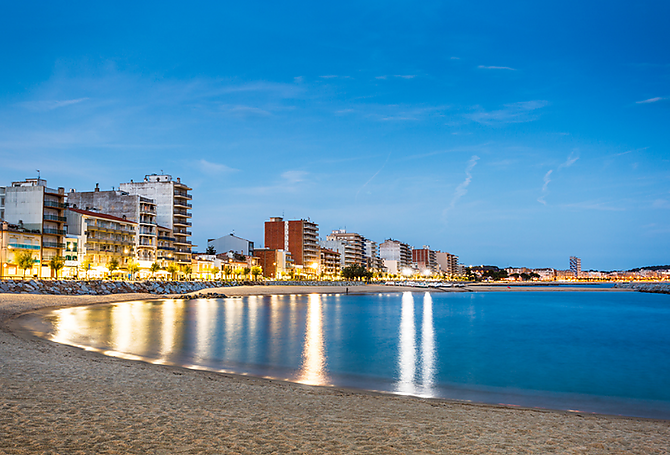Calonge is a municipality located about 45 kilometers from the city of Gerona, and as such, it attracts more and more attracts more home buyers because of the uniqueness of its location in ka Costa Brava, its history, and the full range of services offered to the residents.
The first thing to mention is that Calonge is divided into two population centers, one on the beach, more modern cut known as Sant Antoni, and another nucleus located in the old medieval village, more classical cut. This characteristic makes Calonge a special place, being able to enjoy beach areas in summer, on the Costa Brava, and at the same time a historical setting in the old part of the medieval village at any time of the year.
The historic Calonge
Being so close to the sea and enjoying good temperatures almost all year round, Calonge was a place where numerous cultures had settlements.
In the Neolithic, there were already settlements in this region as evidenced by the Puigsesforques Dolmen (3,400 a.C.). A place that would later be used as an execution site.
The Iberians also had a presence in the Calonge area, creating the town of Castell Barri (4th century BC).
Later, the Roman Empire also left its mark in the area, such as the Villa del Collet (2nd century BC) dedicated to the cultivation and export of wine.
After the decline of the Roman Empire, already in the eighth century in the middle of the Middle Ages, the Counts of Gerona erected in the town a fortress castle to be able to monitor the border of the Arab attacks. This castle passed into the hands of the Cruïlles dynasty and later became the Dukes of Sessa in the 16th century
The Castle of Calonge is its main tourist landmark and can be visited. In its spectacular ensemble the Square Tower stands out, which is perhaps the oldest vestige of the original construction, since the rest is the restoration that was undertaken after the fire of 1485. The other part of the Castle, converted into a palatial residence, corresponds to the thirteenth century, highlighting its gardens and the courtyard.
In addition to the castle, it is worth mentioning other historical constructions of Calonge, such as the Church of San Martín, which impacts visitors by its size, or Can Savalls, where you can see ancient Jewish symbols aside from its impressive entrance door.
Around the grounds of the castle, from the eighteenth century, began to generate an important industry around the cork, well into the twentieth century, date when tourism becomes the economic engine of the region, especially when it begins to develop the modern nucleus of San Antoni, or "the beach of Calonge".
Currently, Calonge is twinned with three localities, the Grenadine Otívar, the Andorran San Julián de Loria, and the French Saint Paul de Fenouillet.
Sant Antoni de Calonge
The modern core of Calonge, known as Sant Antoni de Calonge is located on the coast, and has the characteristic of having several watchtowers nearby, to defend the old medieval village from attacks by corsairs.
These towers are Torre Lloreta and Torre Valentina.
Sant Antoni de Calonge was a fishing center of Calonge, which began to grow more and more, until in 1923 it was built a church dedicated to Sant Antoni, which recognized the growing importance of this population center.
At the outbreak of the Spanish Civil War, Calonge entered more quickly into decline, unable to sustain the cork industry that began centuries ago, and that already at the beginning of the war was wounded to death. At the end of the war, and above all, with the fall of the Franco regime, Calonge re-emerged as a tourist resort and many people moved from the town of Calonge to the coastal area of Sant Antoni.
This expansion after the Franco regime makes San Antoni an exceptional tourist destination encouraged by a large offer of restaurants, small hotels on the beach and a mild climate for much of the year.
The highlight to know when you live Calonge
The Cove of Les Roques Planes
Cala Cristus - Ses Torretes
Platja de Sant Antoni
Castle of Calonge
Cabo Roig
Cala de El Paller

